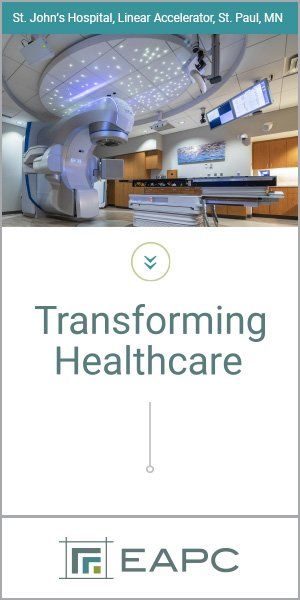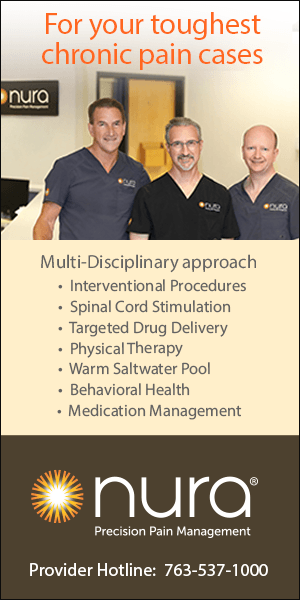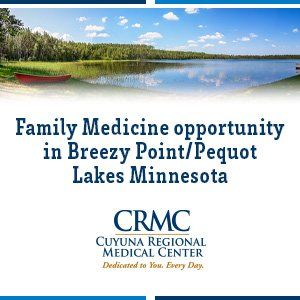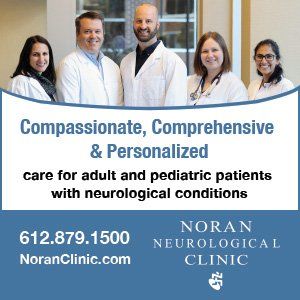olatile organic compounds (VOCs) have been well known entities in the industrial space, particularly, but not exclusively in petroleum and natural gas refining. Their emergence, however, as potential biomarkers has been pursued only in the last decade for applications in health care and environmental surveillance. VOCs are small molecules usually in the one-to-four carbon range. They are represented in all organic chemistry categories from aldehydes and esters to ketones and alcohols. Both qualitatively and quantitatively, they may be the most ubiquitous molecules on our planet, from the earth’s deepest core to the outermost levels of our atmosphere.
Cover one
Volatile Organic Compounds
A beacon of hope
BY David R. Brown, MD, DSc, Bradley S. Miller, MD, PhD and Andre Lamontagne, BEE, MBA
Early interest in their potential biomedical uses was based on their universality and easy accessibility. Initially VOCs seemed ideal for minimally invasive and repetitive diagnostic screening, but their potential applications are much broader. In the context of molecular based multi-omics precision medicine models, VOCs as products of intracellular metabolism may be the optimal molecules to compliment the genome, transcriptome and proteome, as well as other omic domains to functionally define the metabolome.
The role of VOCs in molecular precision medicine has significance to the development relevance and implications for clinical multi-omics. The metabolome has been the least clearly defined of the omics, with limited molecular candidates and reduced data-rich potential compared to other omics.
VOCs offer a large number of well-defined and high-quality biomarkers to complement the other omics and more clearly and precisely define the metabolome as compared with other less definitive molecules and thereby enhance the integration of a higher quality source of biologic expression data. Integration of VOCs into a precision model could have significant benefit for biotechnology partnerships and collaborations as VOCs are products related to metabolic reactions and all require the need for a catalytic enzyme. Also, the use of combinations of other biomarkers could further amplify the analytic value of VOCs in select applications and increase the reliability, relevance and value of both classes of biomarkers and their respective supporting technologies. This would support the concept, protein functions complement fundamental VOC biology.
VOCs may provide unique keys to drug discovery.
Growing Awareness
VOCs are produced intracellularly in all biochemical metabolic reactions, whether catabolic or anabolic. Some VOCs may be recycled for use in the biosynthesis of other molecules, but the majority are transported out of the cell, whether they are produced in animals, plants, microorganisms or even viruses. Ultimately, they are released from their source and into the environment where they constitute the largest number and variety of organic molecular substances in our biosphere.
Their prominence, variety and accessibility suggest that VOCs have multiple potential applications as biomarkers in clinical medicine and public health. During the past decade interest in such indications and attempts to develop creative technologies to confirm their utility, advantages and implementation have resulted in growing interest, multiple approaches and investment opportunities. In addition, rapid advancement in the development of potential complementary biotechnologies and new models and approaches in both clinical medicine and environmental issues have raised increased interest and enthusiasm around VOC research.
VOCs and Human Biology
Essentially all three trillion cells present in the human body will be active in a metabolic process either involving biosynthesis to create new molecules or modifying and breaking down existing molecules to create energy to power cellular functions or generate information for biologic signaling and other essential functions. The great majority of these processes will result in the creation of residual molecules, which are VOCs of various types and classes. The term volatile organic compound is in reference to their abilities to exist in a liquid state and be transformed into a diffuse vapor or gas. Intracellular VOCs not involved in further biochemical reactions or additional modification are transported out of the cell across its external membrane into the extracellular space and into the capillary space and the general circulation of the blood stream. A minimal percentage of these circulating VOCs will be excreted in the urine and perspiration or into the gastrointestinal areas. The vast majority, however, remain in the bloodstream and are transported to the lungs. Upon entering the pulmonary system alveolar spaces their property of volatility allows them to move from the bloodstream and transform to a gaseous state, although it may take multiple passages through the lungs for all the VOCs to achieve transformation to a gas. Once becoming gas molecules, the VOCs are able to join the other pulmonary gases and be expired from the lungs, either directly into the environment or a contained space for measurement and analysis.
Beyond human sources, we are literally awash in VOCs. They have been part of the chemical components of our biosphere since the emergence of life on our planet some 3.5 billion years ago. They have been released, accumulated and recycled into the atmosphere, water, geology and every other describable place. They cannot be dismissed as incidental or a curiosity. VOCs are a foundational and fundamental component of the earth’s environment. They deserve and should not be denied serious consideration and study and should be included as relevant factors in our biomedical and environmental sciences. They should not be relegated to incidental or secondary applications, but be pursued as important and essential molecular contenders in our biotechnology innovations.
Although products of cellular metabolism, many VOCs are not disposed of as waste without further biologic functions or as inert biomarkers. Environmental VOCs play a prominent role enhancing sensory experiences and behaviors in a multiple number of interspecies contexts. They amplify perceptions in humans, animals and plants, expressing themselves as aromas, flavors and biologic signaling molecules. Many VOCs facilitate social communication as molecular messages related to reproduction and mating; territorial marking to signal dominance or boundaries; alarms to warn of dangers or potential threats; and trail guides to food sources and protective spaces. In serving as signals and modulators of pleasures and behaviors, VOCs form an airborne or subterranean interspecies communication network, creating a biologic explosion for the exotic and erotic. In this capacity VOCs are pheromones, chemical messages released by both plants and animals, identified by a class of olfactory G-protein-coupled receptors or TSSRs (trace amine associated receptors) in humans and animals for the detection of VOCs acting as social cues. These receptors can signal from olfactory areas via pathways connected directly to the hypothalamic and pituitary centers, which modulate behavior and reproduction by endocrine hormonal mechanisms. They may also have the capacity to function as endocrine disruptors in humans and other species.
Where there are pleasures, as well as pathologies, there are VOCs. They are the biological basis for the natural fragrances and aromas of flowers and fruits, the scents of the forest and smell of grasses following rain. They are the flavors in foods, the bouquet of wine and the aromatics of spirits and the smell of freshly brewed coffee. They are the pungent aromas of spring and autumn and the basis for the trends in foraging for natural ingredients and flavors in contemporary food preparations.
VOCs modulate the transfer of signals from mushrooms, fungi and other botanicals, which act as psychedelics and modulators of neural behaviors and accentuate human and animal perceptions. They are the ultimate coordinators of complex environmental ecosystems such as forests and prairies. These messages can signal dangers, such as imminent disease outbreaks, insect invasions and developing fire-related risks. The potential values and benefits of VOCs in community public health and environmental monitoring and surveillance are immeasurable. Our world would be far less interesting without the diversity and intrusions of VOCs.
In the past decade, the Advanced Research Projects Agency (DARPA) within the U.S. Department of Defense began studies related to VOCs. Using multiple large-frame parallel mass spectroscopy, they identified and catalogued over 3200 discrete volatile organic compounds of human origin, applying high precision analytics and algorithms. The data revealed an unexpected but very high degree of specificity and associations. This was manifested with regard to identifying cell, tissue and organ of origin for the potential disorders as well as the most likely clinical diagnosis. A disease or environmental disruption can change an organism’s metabolic function and modify its cells biochemistry, resulting in the production and release of unique and specific biomarkers. This was especially highly correlated for a large spectrum of cancers, neurodegenerative disorders and chronic metabolic diseases. This correlation of diagnostic specificity and target tissues has been confirmed in a large number of clinical studies, by multiple methodologies of the past few years, in international peer reviewed journals. Additional clinical studies have continued to confirm that VOCs allow significantly early detection of disorders before most patients are symptomatic or have changes demonstrable with conventional diagnostic technologies, particularly visualization-based systems such as MRI and CT scans. In many cases VOC-based detections may be possible years, even a decade, before any overt clinical manifestations.
These characteristics of VOCs suggest that new clinical applications, predicated on exhaled breath analysis, could create a minimally invasive procedure allowing repeatable measurements at frequent intervals. It could provide cost-effective data assessment and the addition of low cost prognostic assessment and therapeutic response evaluation. The potential for very early diagnostic confirmation and mass screening applications suggests respective opportunities for reduced health care costs. This said, the development and implementation of VOC-based diagnostics are initially demonstrating substantial complexity and many unique challenges.
VOCs in Clinical Medicine
The concept of VOCs as useful biomarkers has validity, but there are many challenges to creating optimal scenarios and maximizing their usefulness. The concept that human breath contains relevant information for diagnostic purposes seems both rational and less complex than other available methodologies and analytes. It is initially staggering, however, to confirm that a single exhaled human breath contains an average of 25 x 10 ^21 molecules (i.e., 25 quintillion), an essentially incomprehensible number. A multitude that exceeds the total number of individual stars in all the known galaxies in the entire visible universe (1.5 x 10^18), by a factor of over 1000 orders of magnitude. The vast majority of these respiratory molecules are a mixture of known gases; the VOCs we are interested in identifying may constitute only a few thousand molecules or fewer. This is a classic needle in the haystack analogy or a single grain of sand on a large beach challenge.
The technological approach to this reality is predicated on three discrete steps, which constitute the previously referenced challenges. All of these require experience, comprehension and collaboration with the most sophisticated levels of device and instrumentational, mechanical and electrical engineering technologies.
VOCs allow significantly early detection of disorders before most patients are symptomatic.
The first challenge relates to methods for capture and containment. Procedures developed for industrial applications can be modified to create extremely effective and efficient self-contained systems, which can secure gases with limited collection and storage losses. Negligible leakage from a respiratory exhalation could be a fraction of a percent and maintain a constant molar volume until the measurement and detection phase. Such devices would operate at a level of design and function beyond any currently available pulmonary function clinical-assessment systems.
Second, detection technologies to identify and characterize VOCs in a clinical setting would involve self-contained methodologies independent of large-scale mass spectroscopy because of size, scale and convenience. Well established methodologies have been incorporated for decades into clinical diagnostic instrumentation that are currently being considered and evaluated for VOC detection. Many such methods have been successfully employed in related industrial molecule identification.
Finally, after the VOCs of interest have been captured, contained and detected, comes the most challenging step: analytics. Presented with the vast number of molecules in a single breath exhalation, highly precise, elegant and advanced algorithms will be obligatory to credible and reliable data validation. Collaborations with state-of-the-art informatics will have to operate at an astronomic scale. The paradigm for the implementation and operation of clinical VOC studies proposes a decentralized model at point of service and point of contact locations. Although such instrumentation has been conceived and proposed as desktop devices, they face multiple issues related to broad acceptance and credibility. Other concerns include reimbursement and integration with U.S. federal regulations around reliability and accuracy of patient-related test results, and compliance with clinical laboratory improvement amendments (CLIA). These standards apply to all tests on human-derived specimens for the purposes of diagnosing, preventing or treating diseases or assessing health. To achieve clinical viability, VOC-based technologies must perform at the highest laboratory-based and research-based standards for specificity, sensitivity, accuracy, precision and reproducibility. This is necessary to establish the foundational basis for proof of concept, ensuing clinical trials, and ultimately implementation in clinical, public health and related diagnostic or therapeutic collaborations. These standards are also critical for acceptance by private and public payers, for negotiating equitable reimbursements and gaining broad implementation. They are also essential to creating collaborative academic and commercial partnerships such as attracting investors and technology leaders.
The primary clinical applications for earliest diagnostic confirmation have multiple relevant implications for patients and health care providers. The first order of positive impact is significant potential for increased longevity and quality of life. The possibilities for less invasive and frequent complementary diagnostic interventions and more benign and less frequent and lower dosing of therapeutic regimens speak for themselves. The additional value of recurrent, minimally invasive follow up VOC testing further reduces procedural issues and will enhance testing compliance and improved prognostic evaluation and outcomes. There are also positive personal freedom choices and short- and long-term financial benefits. These benefits of VOC monitoring could have a significant impact on diagnostic screening for family members and relatives where there may be potential for similar disease occurrence or exclusion. VOCs may provide unique keys to drug discovery and biomarker-driven clinical therapeutics. An example could be utilizing reciprocal molecular structures for homologous applications such as creating pharmaceuticals complementary to those of biomarker chemistry. The more the specificity of the biomarker the greater the potential to reengineer the molecular structure and use it to create a complementary molecule for targeting interactions with receptors, thus leading to a potential therapeutic drug.
Diagnostic biomarkers, and VOCs in particular because of their universality, large numbers and opportunities for repeat measurements in a variety of clinical disorders, provide significant opportunities to create data-rich information databases. These can provide vast opportunities toward driving further diagnostic and biologic insights for human diseases and public health disruptions and open the doors to unimagined therapeutic advancement for molecular therapeutic discoveries and drug development and implementations. Large datasets are emerging as the creators and drivers of emerging technologies for human and environmental health, and VOCs can play a significant role in pursuing and achieving these future positive realities.
Population Risk Assessment
As desirable and relevant early screening, prognostic and recurrence detection applications are for minimally invasive biomarkers, there is another potential application for VOCs on their own or concurrently with other similarly available disease-specific molecules. The ability to identify and characterize disease specific at-risk populations may be an even more important and productive application. Precision medicine models and economic considerations drive the pursuit for diagnostic interventions to be more closely related to the prevalence and incidence of the clinical disorders that are being initially diagnosed and followed up. The idea of proportionate assessment to the probability of the presence of a disease in a population of interest is central to efficiency and cost containment. In the event of lower incidence, fewer patients need assessment, and fewer diagnostic tests, especially the most highly technical and expensive, will be necessary. This could lead to a new role for epidemiology in health care intervention and disease management.
At a time when government and private payers are restricting more invasive studies, particularly in follow-up applications, evidence for the presence of active clinical disease, the use of less expensive and less invasive but sensitive and specific biomarkers such as VOCs can be optimal. This is particularly and broadly applicable for cancers, neurodegenerative and metabolic disorders where VOCs have their highest association and optimal specificities. They are also the disease categories for which the largest number of other accessible biomarkers are being identified and are highly likely to be used concurrently with VOCs to enhance and amplify their respective clinical detection and outcomes with limited impact on cost and patient time or lifestyle disruption. Clinical oncologists pursuing precision-based cancer diagnostic strategies have endorsed the relevance for earliest preclinical disease discovery and the principles of defining at-risk populations as essential to managing the high and increasing incidence, prognostic advantages and economic related issues. The role for diagnostic biomarkers in the model is supported and endorsed for enhancing cancer-related detection and diagnosis. Challenges related to neurodevelopmental and neurodegenerative diseases would also benefit from incorporating the earliest diagnosis and at-risk population models, supported by disease-specific biomarkers, into their emerging precision practice paradigms. VOCs can play important roles for the optimization of disease detection and identification.
Conclusions
VOCs offer significant opportunities and broad scale applications for earlier clinical disease detection, for at-risk population assessments and for community public health and environmental surveillance. They may also have potential roles in therapeutic drug discovery and pharmaceutical development. VOC procedures are minimally invasive, point-of-service based and cost effective. They can serve a meaningful role in the creative development and implementation of effective precision medical models related to their most correlated disease categories. In a molecular-based multi-omics conceptualization, they can provide the most direct assessment of the metabolome. They are novel, unique and revolutionary. The potential they offer can literally and figuratively take our breath away.
David R. Brown, MD, DSc, is a pediatric endrocrinologist and molecular biologist currently working in biotech.
Bradley S. Miller, MD, PhD, is a pediatric endrocrinologist and head of the department of pediatric endocrinology at the University of Minnesota.
Andre Lamontagne, BEE, MBA, is an electrical engineer and a corporate executive specializing in designing advanced industrial-based instrumentation.
MORE STORIES IN THIS ISSUE
cover story one
Volatile Organic Compounds: A beacon of hope
By David R. Brown, MD, DSc, Bradley S. Miller, MD, PhD and Andre Lamontagne, BEE, MBA
cover story two
The Future of Biomedical Research: A new presidential advisory from the American Heart Association







































